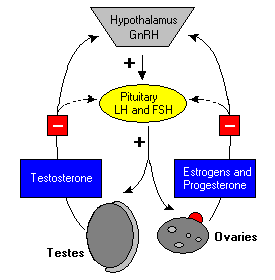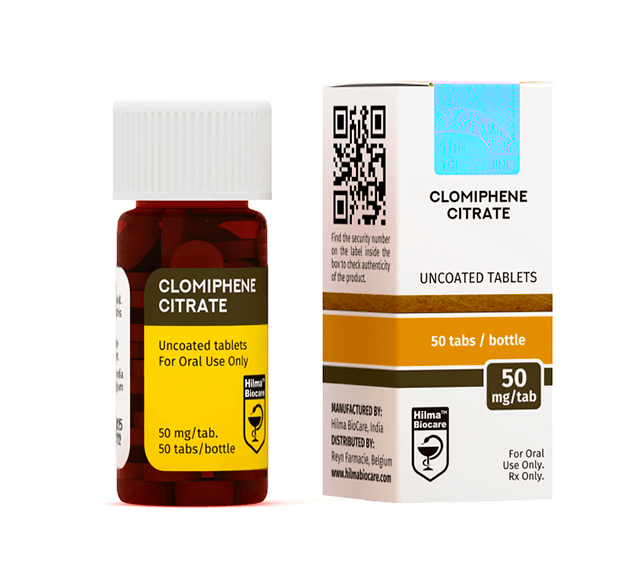What Is Clomid Used For?
We’re now going to explain in a more robust manner how clomid performs its mechanism of action in order to give you a deeper understanding of the product and how it manifests its effects within the body.
We’ll start with the pituitary gland as this is the area of the body that ultimately serves to release the hormones responsible for the production of testosterone (and many other vital hormones) before moving onto the other areas / elements involved in the testosterone recovery process.
What Your Pituitary Gland Does
Your pituitary gland is the “control” centre of your body; it serves to release the vital hormones necessary to either directly interact with the human body, or the hormones needed to create further hormones to help regulate our every process and action.
Our pituitary gland releases both FSH and LH, which serves as the precursor to testosterone production.
When estrogen levels are low, the hypothalamus of the brain then releases the GNRH hormone in response; this then triggers the pituitary gland to release the afore-mentioned hormone types.
The reason why the brain does this (the hypothalamus is an area of the brain) is to enhance the body’s possibility of producing a mature follicle, which itself houses the eggs necessary for ovulation.
As previously mentioned, the release of these hormones also triggers the elevation of testosterone levels in men (and to a degree in women too) - through taking clomid, we effectively trick the body into thinking that our estrogen levels are low, therefore this rise in FSH and LH occurs.

The Role Of Luteinizing Hormone
Luteinizing hormone is crucial for the development of eggs in the female body and plays an important part in regulating the menstrual cycle.
In men it precedes testosterone along with FSH, thus meaning that its release is crucial if we are to elevate and sustain our base hormone levels at any time.
Through the production of testosterone, male sperm production amplifies which in turn makes ovulation more likely; in short, in both the female and male body this hormone is designed to improve the likelihood of fertility.
What’s A Selective Estrogen Receptor Modulator (SERM)?
Though they are similar to the other means of estrogen control (AI’s or Aromatase Inhibitors), SERM’s ultimately differ in that they block the activity of estrogen within the breast tissue of both the male and female body.
This helps us to understand why they provide slightly different benefits to one another in terms of protection - whilst they are both excellent for reducing overall estrogen levels, you’ll find that AI’s are often a little more effective at counteracting the general issues relating to estrogen (water retention for instance) whereas SERM’s are particularly effective at keeping gynecomastia at bay (generally speaking.)
This is because of the different means in which they fulfil their mechanisms of action - AI’s stop estrogen at the “source” whereas SERM’s reside in the breast tissue and serve to block them from fulfilling their effects from that location.
Whilst this does of course lead to a fairly similar end result, it provides the slight variations listed above in terms of effect fulfilment.
How Natural Testosterone Production Is Regulated

The reason why clomid is so effective at regulating natural testosterone production is because it works with the body’s organic processes to produce it.
This is completely different to the means in which synthetic testosterone achieves its effects. The latter compound provides a fairly massive boost of the hormone (dose-dependant) but it doesn’t do so by using what the body already has at its disposal.
In fact, synthetic testosterone overrides these natural processes and provides an “excessive” amount of the hormone, more than we could ever produce ourselves through natural means.
When you take clomid, you’re actively encouraging the body to keep “using” what’s at its disposal and produce testosterone naturally. As such, clomid is often crucial both during and after a steroid cycle.
It’s a great way of counteracting “shutdown” in the middle of a cycle, and as a means of encouraging organic testosterone production once it comes to an end.
How Clomid Aids Recovery Of Testosterone Production
As previously mentioned, it’s ultimately the manner in which clomid encourages a very “natural” pathway to open for the production of testosterone that makes it so useful during the post cycle phase.
At this time, the body has become accustomed to relying on an exogenous source of this vital hormone in the form of anabolic steroids or synthetic testosterone - as such, it needs to “rediscover” its abilities to produce testosterone again.
Clomid “forces” the body to utilise its natural pathways to produce this hormone again - this then helps to elevate and regulate the levels we have available in our system.
Without the use of clomid or an effective PCT plan, it can actually take up to one year for levels to reach their normal range again. Please keep this in mind if you’re thinking about ignoring PCT!
How Clomid Prevents Estrogen Build-Up
 As you’re probably well aware by now, excessive levels of estrogen within the body can lead to all kinds of undesirable effects taking place (depending on your genetics, responsibility in terms of dosing - and to a degree, luck.)
As you’re probably well aware by now, excessive levels of estrogen within the body can lead to all kinds of undesirable effects taking place (depending on your genetics, responsibility in terms of dosing - and to a degree, luck.)
When you incorporate clomid, it doesn’t stop estrogen being produced at the source like an AI but instead it does serve to effectively render it somewhat useless at its conversion sites.
This means that whilst estrogen is going to be present, it isn’t going to be able to effectively exert its effects. This is essentially the same equivalent as nullifying its existence...to a degree.
So whilst we aren’t actually preventing the physical build-up of estrogen with a SERM, what we are doing is ensuring that the build-up poses no threat, nor can any significant build-up or development of estrogenic activity occur.
